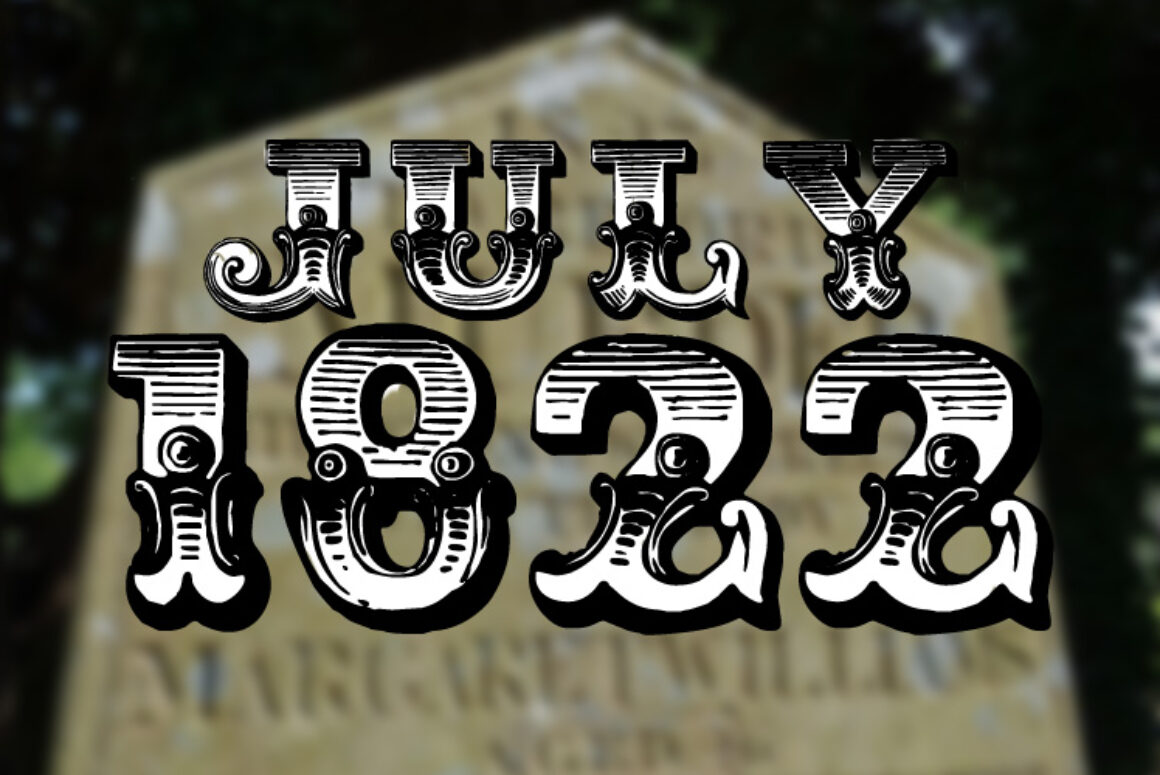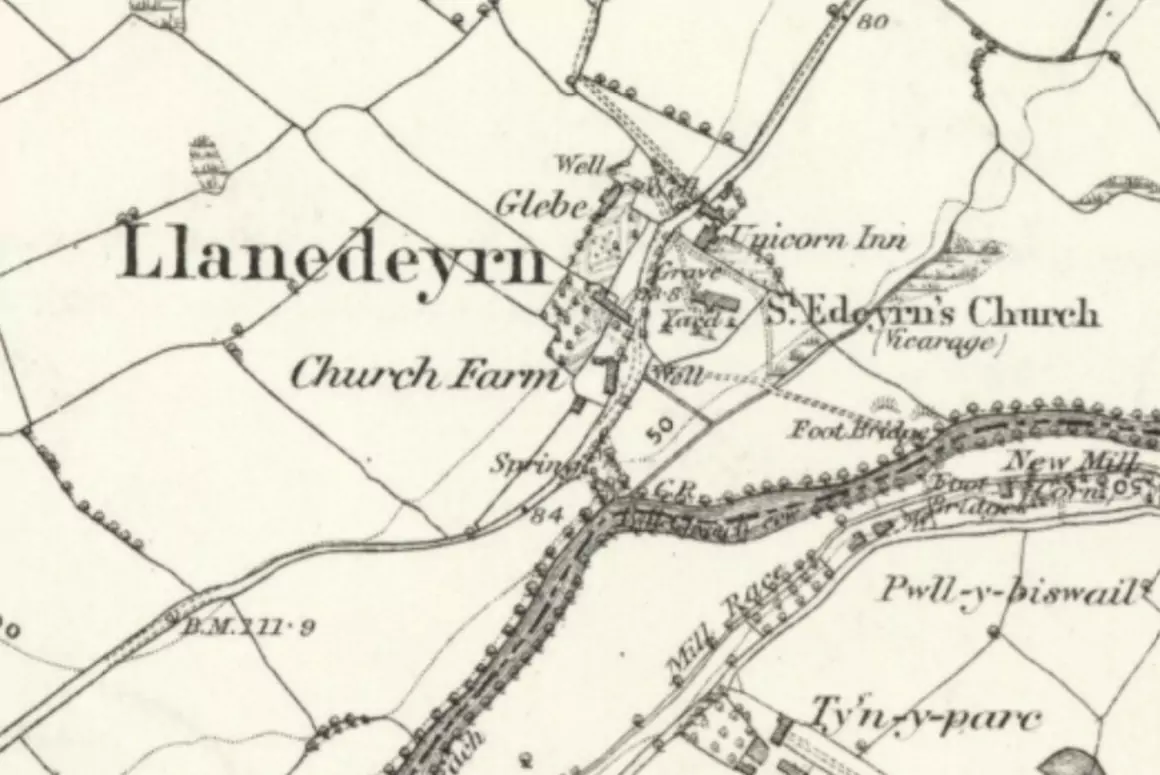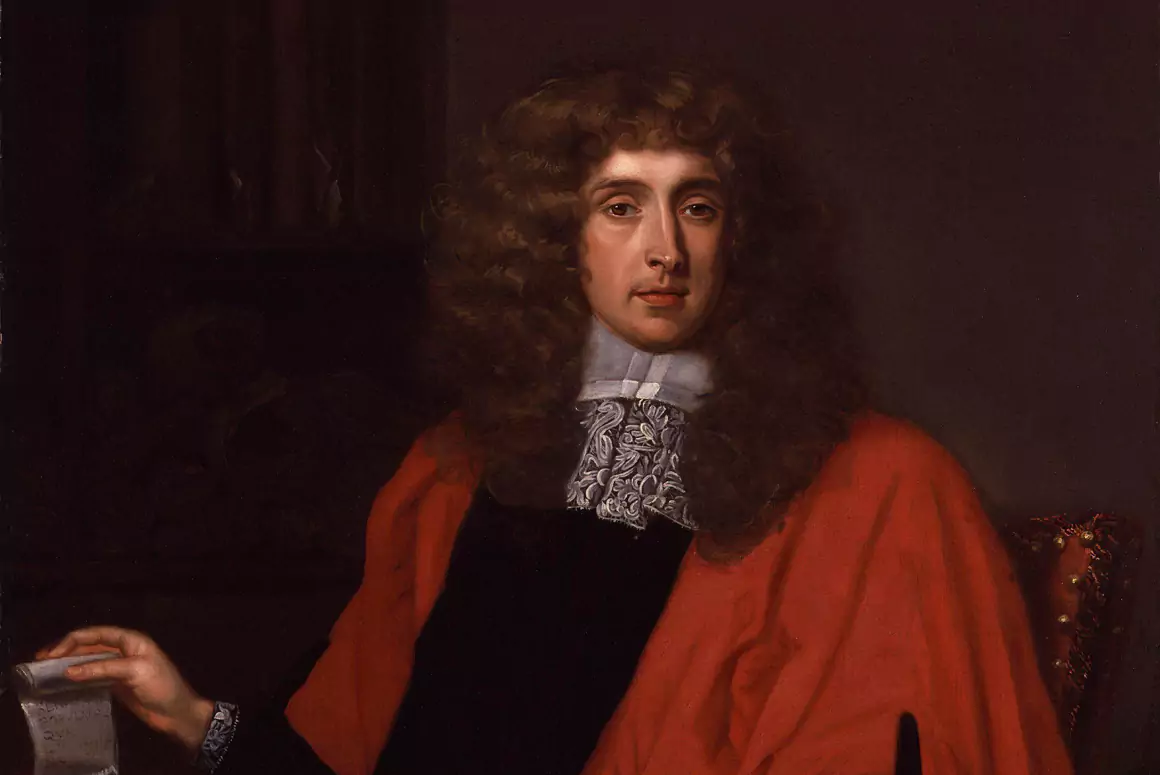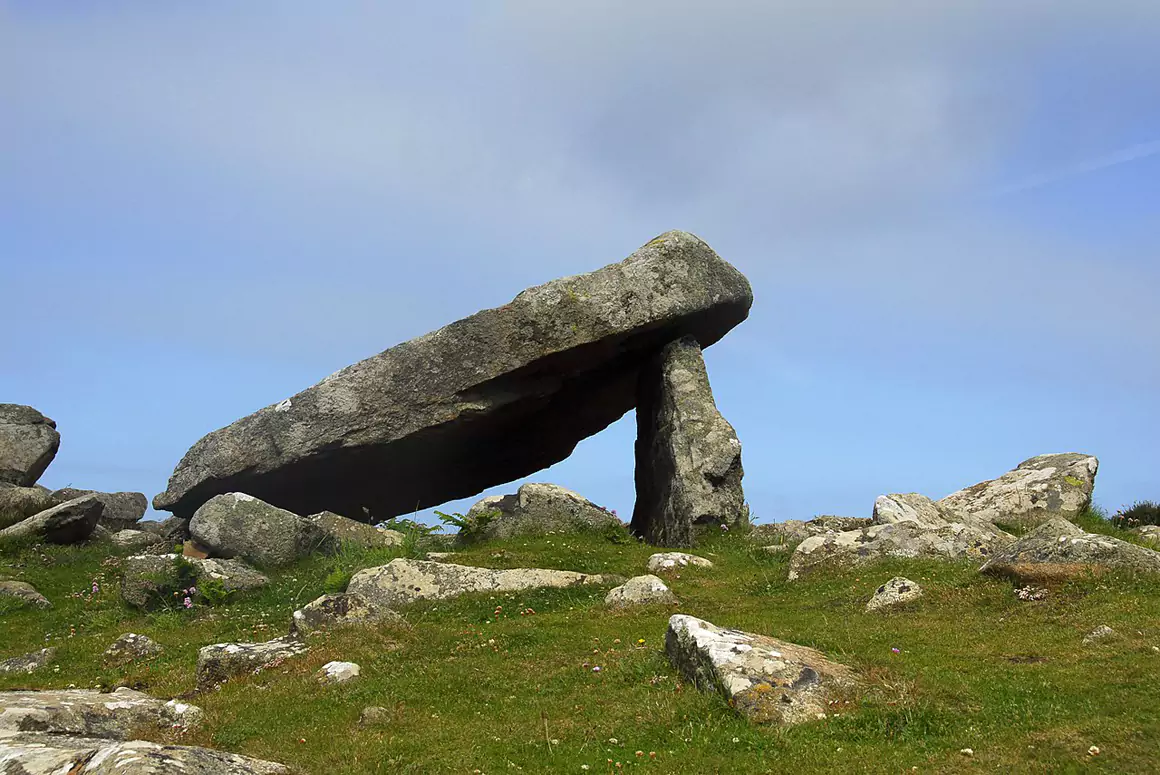![]()
The Cambrian Newspaper is a remarkable resource for anyone even vaguely interested in Welsh history. It was published in Swansea as the first English language newspaper in Wales, beginning in 1804 and it shows us things that nothing else can. Look at the news from July 1822, two hundred years ago, and you will see what I mean.
The first thing you can’t help noticing is that the front page is full of a variety of advertisements and it would be a mistake to ignore them, for there are unexpected details of life in the past. You will find a list of schools across the whole of South Wales that are opening and have vacancies. In fact, Mrs F D Michael school on Wind Street in Swansea, just down from the newspaper offices, offered the education and instruction of Young Ladies in music, requirements that this particular street abandoned a long time ago. There are always advertisements for ills and medicines – I have a particular interest in Vegetable Tooth Powder. You’ll find sailmakers, the sale of licences to collect tolls in Morriston, property for sale, notices of bankruptcy, searches for lost property. On 6 July there is a long poem called The Cat and the Boot, which is, in fact, an advertisement for Warren’s Blacking for Boots. There was also an invitation to submit entries for the Eisteddfod, or Congress of Bards, in Brecon in September on The Overthrow of the Egyptians in the Red Sea.
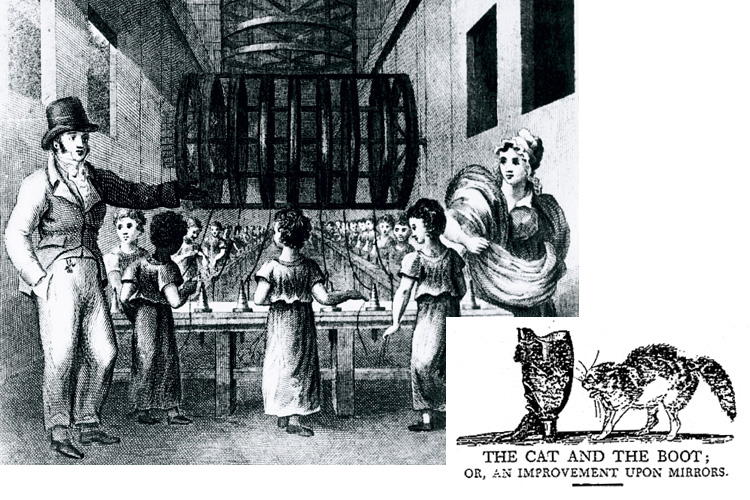
If you turn over, you will also find an unexpected apology on Page Two on 6 July.
Whereas we, David Walters, of the Market-place. Swansea, joiner, John Day, of St. Mary’s Street, Swansea, confectioner, and Rowland Llewellyn. of Orange Street, Swansea, mason, did, on the first day of July unlawfully unroof a stable in the occupation of Mr John Harrison, situate in Orange-street and did dives damages there to. And whereas Mr. Harrison having commenced proceedings at law against us for our said offence, he has been pleased to withdraw the same upon our consenting thus publicly to acknowledge our error, and paying all expenses. Now we do hereby acknowledge and declare, that we had no authority for unroofing or damaging the said stable as aforesaid, but that the same was a wanton act of our own; and we do return our thanks to Mr. Harrison for his kindness in withdrawing ‘proceedings against us. And whereas it has been reported that I, the said David Waiters, have lately used abusive language, touching the reputation and character of Mr. Harrison, which I do declare to be false and untrue-I do therefore undertake, and promise, that I will not hereafter molest, insult, or interrupt Mr Harrison, or any of his family in any way, either by word or action.—As witness our hands this 4th day of July, in the year of our Lord 1833 J. Walters John Day Rowland X Llewellyn
(Llewellyn can’t write and so the paper helpfully reproduces his mark.)
It is frustrating, of course, because it is only part of the story. I mean to say, what possibly would persuade a joiner, a confectioner and a mason to set about the roof of a neighbour’s stable? History has done us a disservice by letting that slip through the net.
Speaking of nets, there was some unexpected water-based news from Chepstow concerning two porpoises, those rapacious enemies to the salmon fisheries, in pursuit of their prey entered the Wye, and one of them remained near the bridge. This encouraged the locals to turn up and shoot at it, though with little accuracy or success. There was however, an early example of the impact of friendly-fire. One ball, after touching the water, rose and passed- through the hat of a boy who was in a barge by the shore, without any further injury than the removal of a small portion of the scalp. Thank goodness it wasn’t anything to worry about.
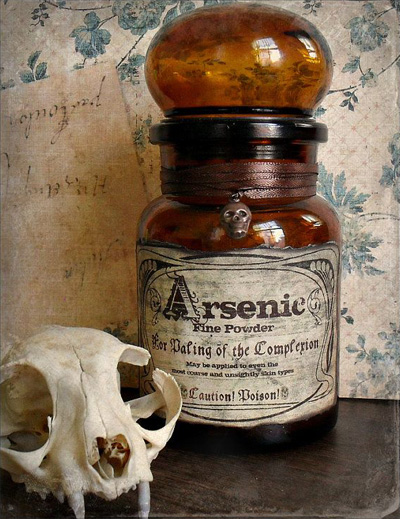
The news from Pontypool though was a little more grim. On 13 July The Cambrian reported that, following a coroner’s inquest, Rachael Edwards was committed to Monmouth gaol, on suspicion of the wilful murder of her husband William Edwards, by giving him a quantity of arsenic. Edwards was the landlord of the Cross Keys public-house in Pontypool, but it was an unhappy home. At Rachael’s trial, the key witness was a housemaid, 16 year old Mary Morgan, who said My master and mistress used frequently to quarrel. They slept in different beds, sometimes in the same, and sometimes in different rooms. It was also said that Rachael was addicted to drinking, and had formed an acquaintance with another man, which, it is supposed, led her to form the horrid intention of destroying her husband.
From the evidence given at the inquest, which lasted for two days, it became clear that Rachael sent her aunt, Anne Williams, to buy arsenic from Ebenezer Jones’ shop, ostensibly to poison mice, but with the instruction to use a false name. She then gave her husband a basin of milk, to which she added a portion of the poison. She gave him more of the arsenic later and he died in a few hours.
After the fullest investigation had taken place, the stomach having been examined by medical gentlemen, the jury gave a verdict of wilful murder against the wife, and she was fully committed to take her trial at the next assizes.
Anne Williams was also committed as an accomplice, though she was later acquitted.
The wretched woman appeared totally insensible to her awful situation. The prisoners were sent from Pontypool in a chaise in the custody of two constables, and it is stated that on the road, having plied the constables and the driver with liquors, they both effected their escape before they reached, Monmouth.
When the news of the escape was received at Pontypool, several gentlemen immediately went in- pursuit, by whose vigilance we understand both the women were taken asleep in Trelleck Wood, about four miles from Monmouth.
Rachael Edwards was found guilty and was hanged in front of a large crowd in Monmouth in August.
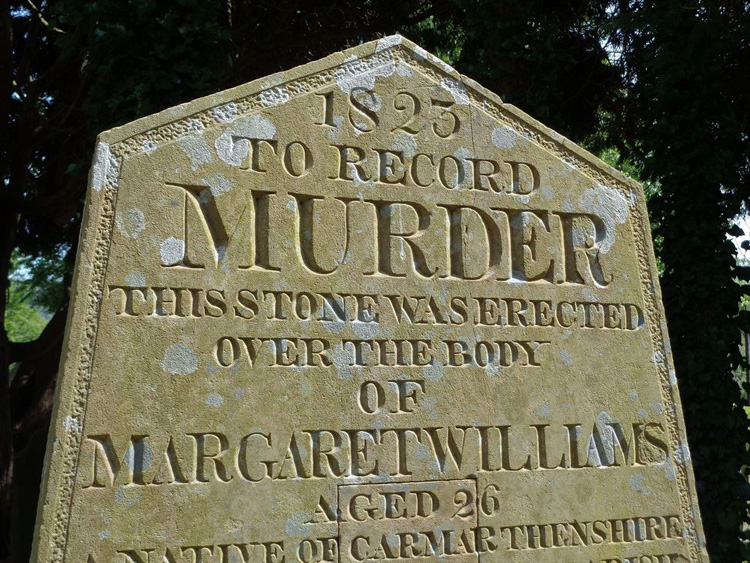
There is another murder too, one that was reported in July 1822, and one that is much more notorious. In the edition of 20 July there is the report of the murder of Margaret Williams found dead on the marsh, a shocking event that angered a whole community and led to the erection of the notorious Cadoxton Murder Stone. It is now two hundred years old and we still talk about it and people still go to see her remarkable grave.
Oh yes, all the news is there in these printed archives, great and small, and we are lucky to have access to it.


